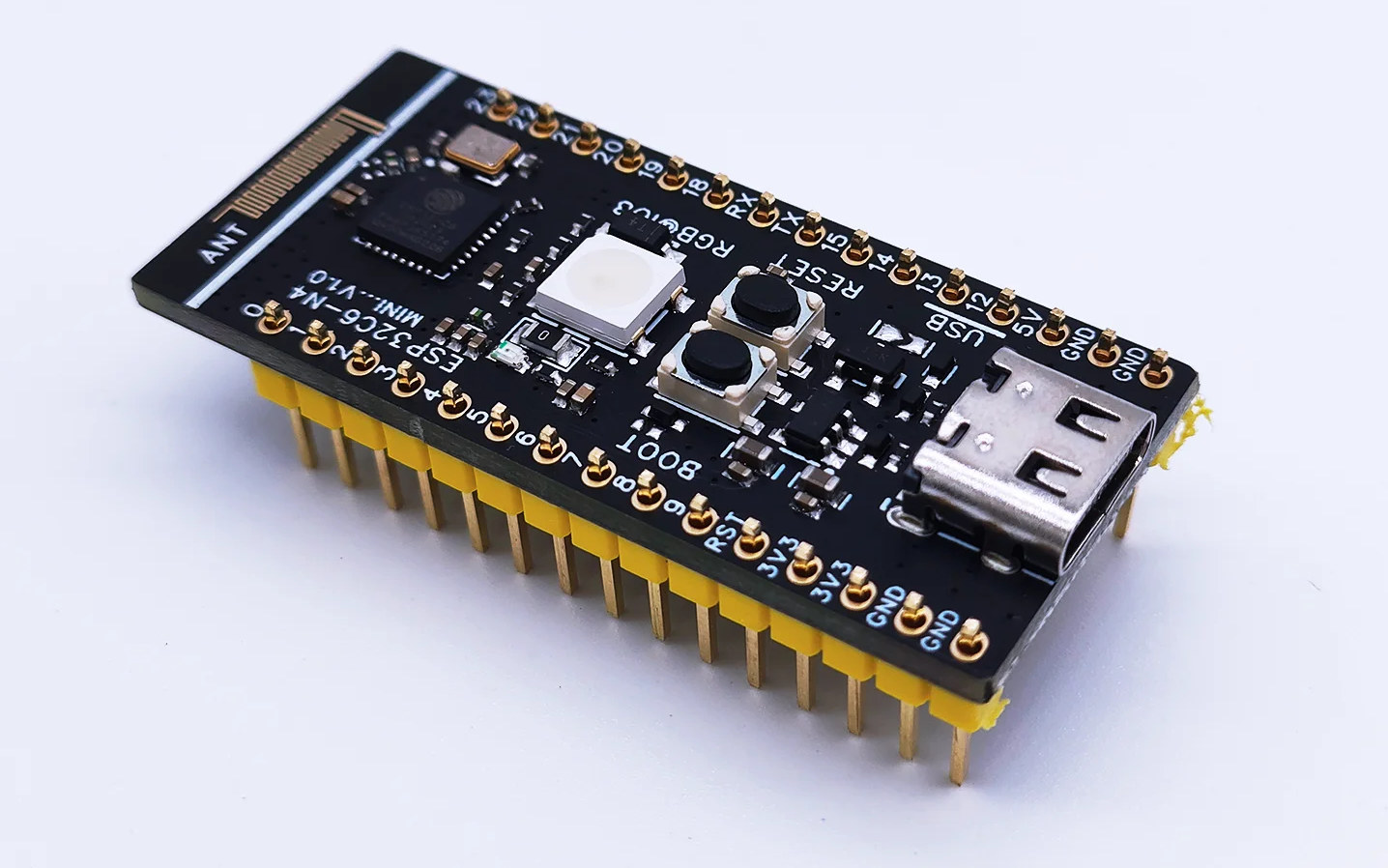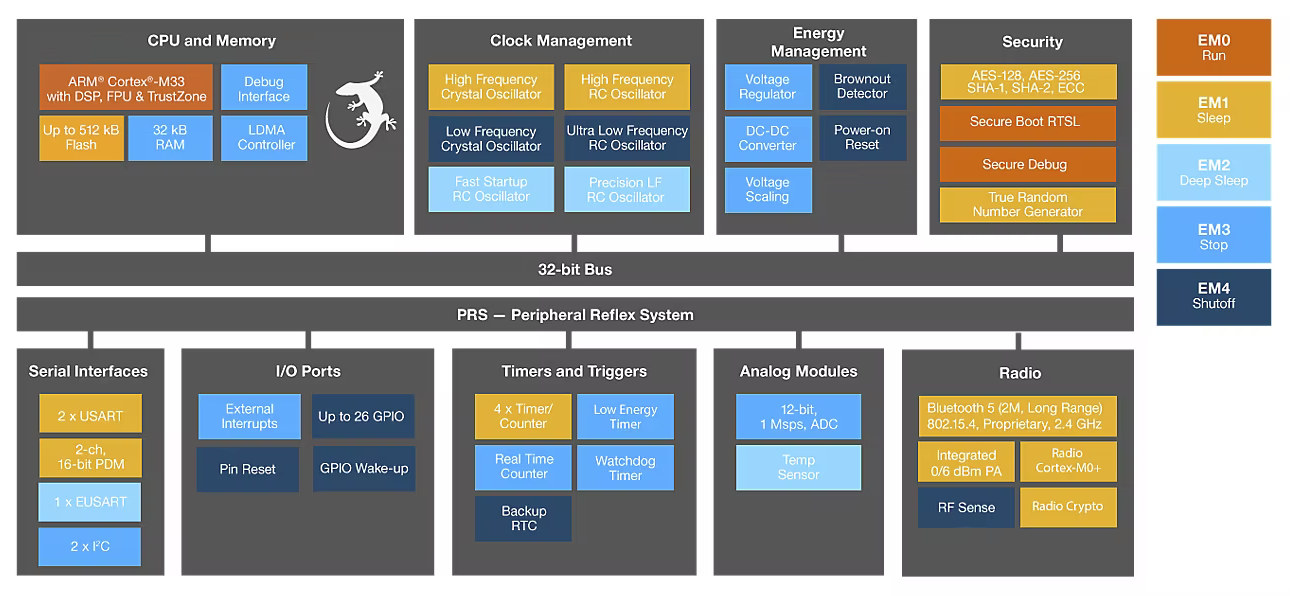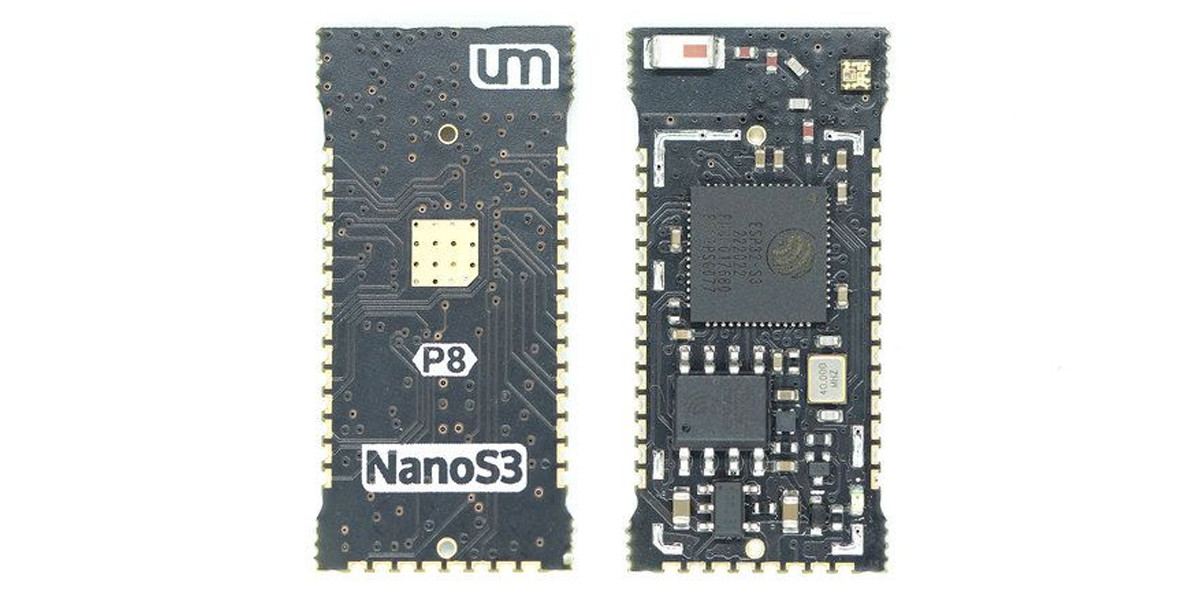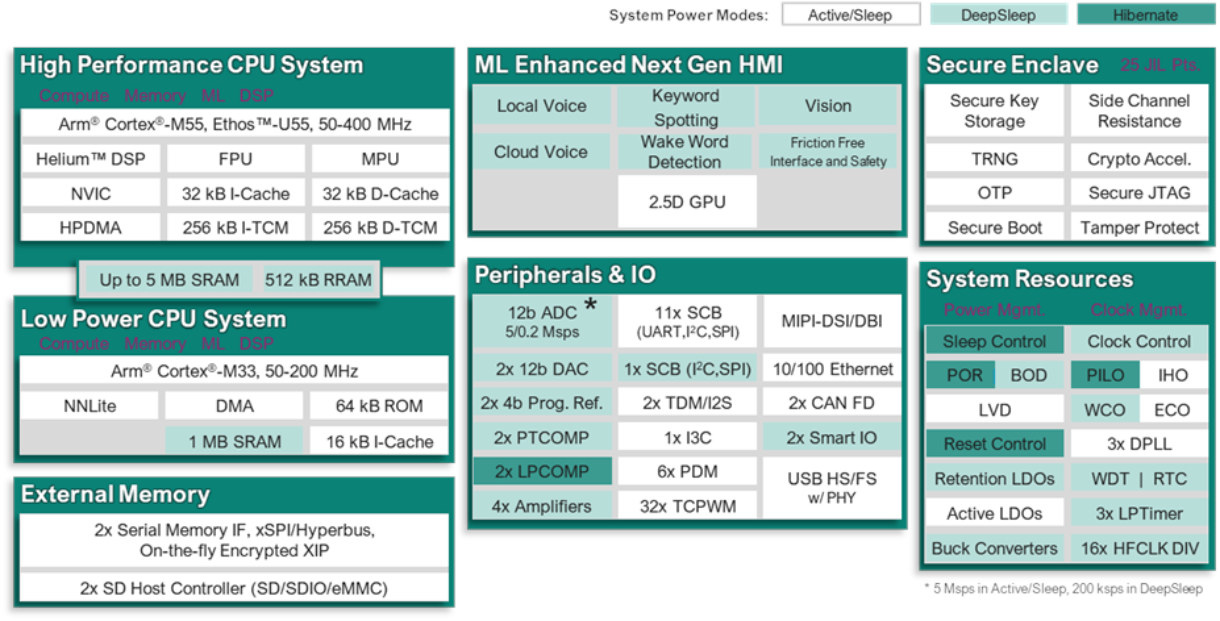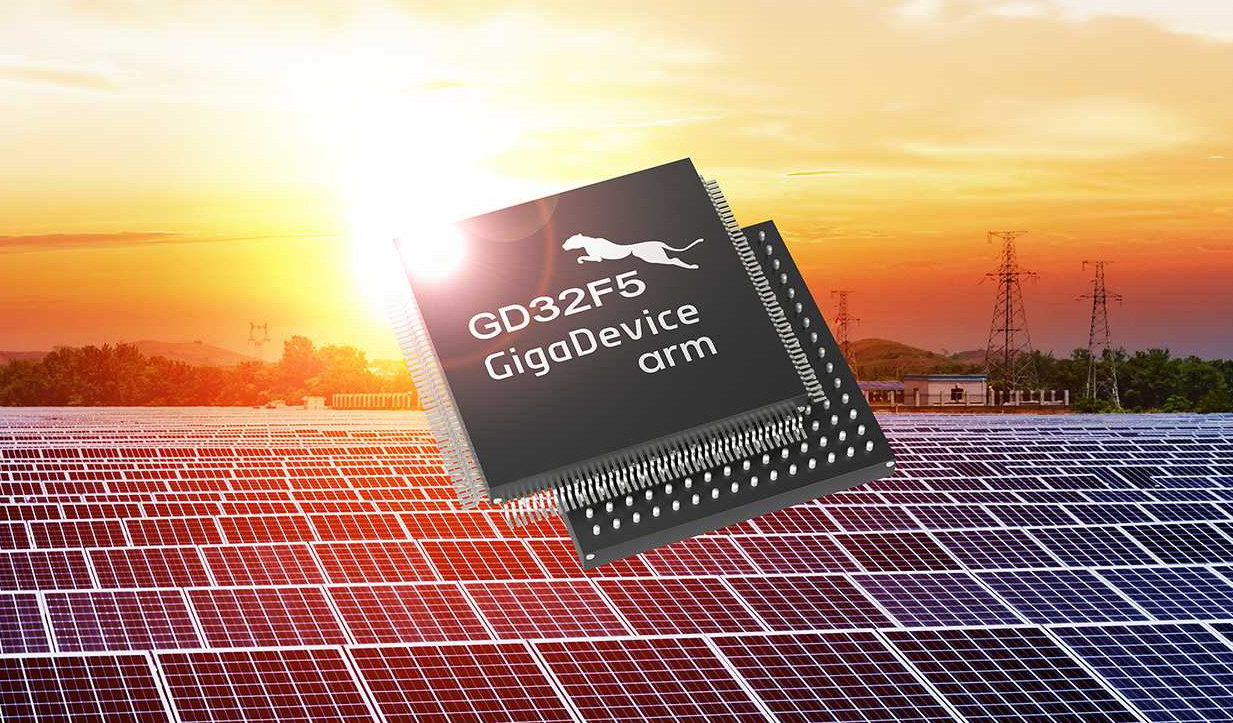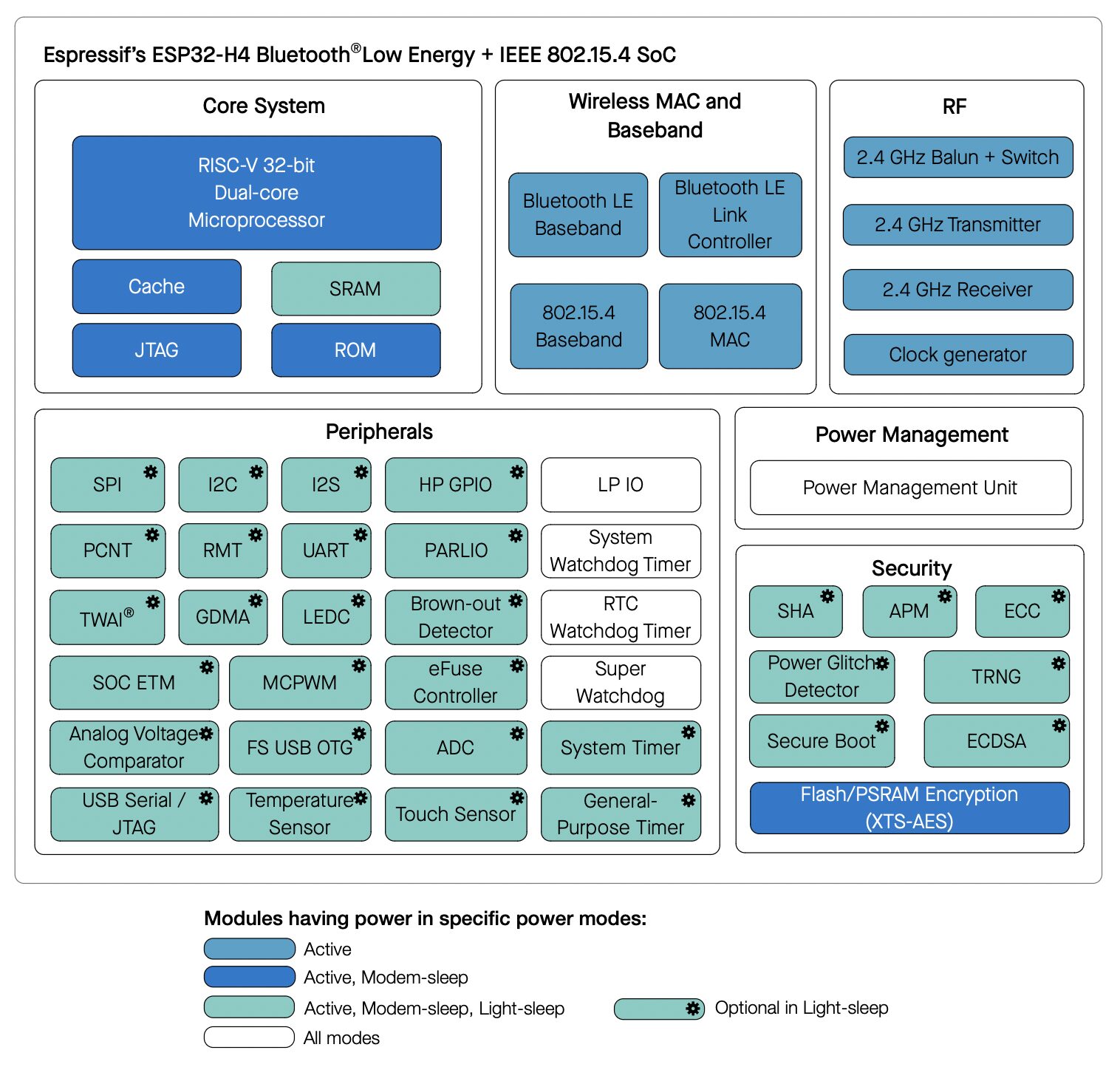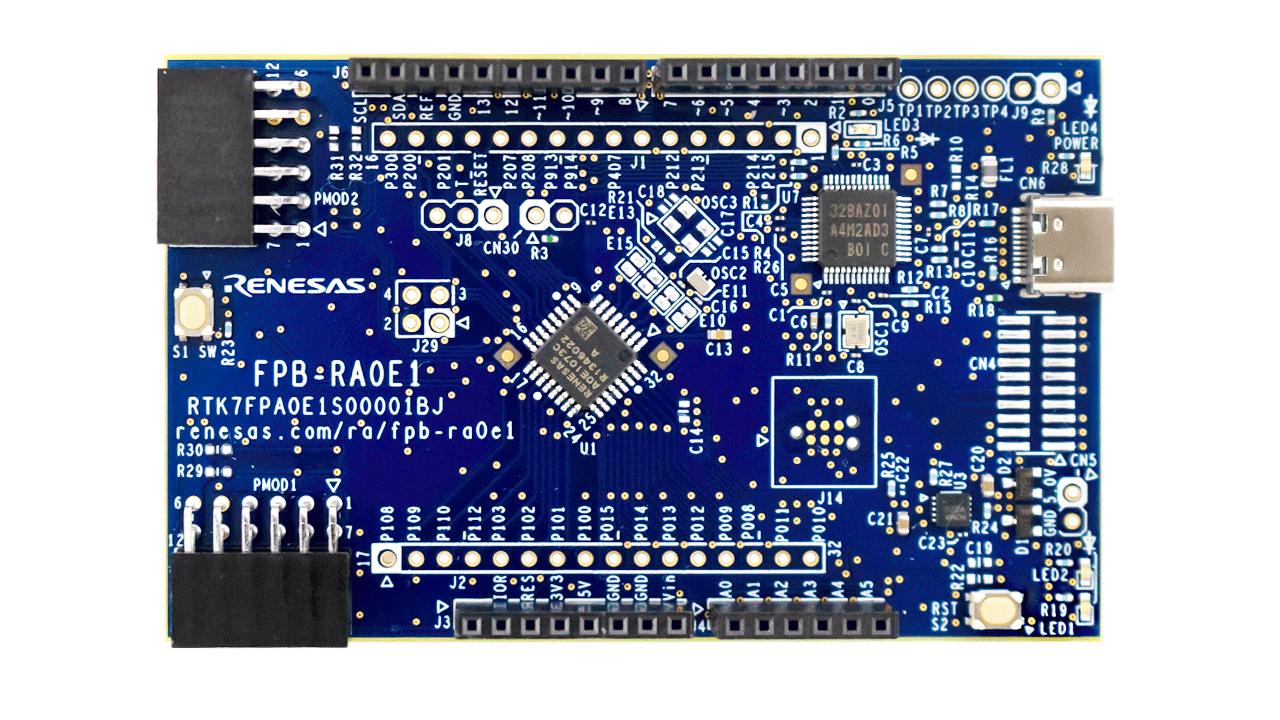WeAct ESP32-C6-Mini is a small development board based on Espressif Systems ESP32-C6 WiFi 6, Bluetooth, and 802.15.4 wireless SoC that’s the cheapest we’ve seen so far selling for just $3.86 on Aliexpress. WeAct was one of the first companies to launch a third-party ESP32-C6 development board year with the price starting at just $6. I still remember the excitement around the first $5 ESP8266 WiFi 4 module when we first covered it in 2014, and ten years later, we can get a full $4 development board with a more powerful 160 MHz RISC-V microcontroller, WiFi 6, Bluetooth 5.0, and an 802.15.4 radio for Thread, Zigbee, and Matter. WeAct ESP32-C6-Mini specifications: Wireless SoC – ESP32-C6-N4 CPU Single-core 32-bit RISC-V clocked up to 160 MHz Low-power RISC-V core @ up to 20 MHz Memory – 512KB SRAM, 16KB low power SRAM Storage – 320KB ROM, and 4MB flash Wireless – 2.4 GHz […]
Silicon Labs BG22E, MG22E, FG22E wireless MCUs target energy harvesting, battery-free IoT devices
Silicon Labs xG22E is a family of wireless SoCs consisting of the BG22E, MG22E, and FG22E and designed to operate within an ultra-low power envelope required for battery-free, energy harvesting applications such as electronic shelf labels, Smart Home sensors, remote controls, and so on. Like the just-announced Silicon Labs MG26, BG26, and PG26, the new xG22E family features a Cortex-M33 core clocked up to 76.8MHz. As an evolution of the low-power BG22, the BG22E offers Bluetooth 5.4 LE connectivity with “Energy Conservation” to further enhance battery longevity and even support designs that eliminate the need for batteries. The MG22E is similar but embeds an 802.15.4 radio for Zigbee connectivity, and the FG22E provides a 2.4GHz proprietary plus the Cortex-M33 is clocked up to 38.4MHz. Silicon Labs BG22E, MG22E, FG22E specifications: MCU – Arm Cortex-M33 @ 76.8 MHz with DSP and FPU (38.4 MHz for FG22E) Memory – Up to 32 […]
Unexpected Maker NANOS3 might be the world’s tiniest ESP32-S3 module, yet fully-featured
Seon Rozenblum, better known as Unexpected Maker, has launched NANOS3 a development board that claims to be the world’s smallest, fully-featured ESP32-S3 module! This new module packs all the peripherals, and wireless connectivity features of an ESP32-S3 while being even smaller than the TinyPICO Nano. The module features two variants one with an onboard 3D antenna and the other with an u.FL connector. Previously we have written about TinyS3, FeatherS3, and ProS3 boards from Unexpected Maker we have also covered many unique ESP32-S3 boards like the ESP32-S3 PowerFeather Board with solar input, the Waveshare ESP32-S3-Relay-6CH, the ESP32-S3 4G dev boards and more feel free to check those out if you are interested in ESP32 boards with advanced features. Unexpected Maker NANOS3 Specifications SoC – Espressif ESP32-S3FN8 CPU – Dual-core Tensilica LX7 up to 240 MHz with 512KB SRAM, 16 KB RTC SRAM Memory – 2MB QSPI PSRAM Storage – 8MB […]
Infineon PSOC Edge E81, E83, E84 Cortex-M55/M33 MCUs target Machine Learning-enhanced IoT, consumer and industrial applications
Infineon PSOC Edge E81, E83, and E84 MCU series are dual-core Cortex-M55/M33 microcontrollers with optional Arm Ethos U55 microNPU and 2.5D GPU designed for IoT, consumer, and industrial applications that could benefit from machine learning acceleration. This is a follow-up to the utterly useless announcement by Infineon about PSoC Edge Cortex-M55/M33 microcontrollers in December 2023 with the new announcement introducing actual parts that people may use in their design. The PSOC Edge E81 series is an entry-level ML microcontroller, the PSOC Edge E83 series adds more advanced machine learning with the Ethos-U55 microNPU, and the PSOC Edge E84 series further adds a 2.5D GPU for HMI applications. Infineon PSOC Edge E81, E83, E84-series specifications: MCU cores Arm Cortex-M55 high-performance CPU system up to 400 Mhz with FPU, MPU, Arm Helium support, 256KB i-TCM, 256KB D-TCM, 4MB SRAM (Edge E81/E83) or 5MB SRAM (Edge E84) Arm Cortex-M33 low-power CPU system up […]
GigaDevice announces GD32F5 Cortex-M33 microcontroller targeted at high-performance applications
GigaDevice has officially launched the GD32F5 microcontroller series based on the Arm Cortex-M33 core. The Arm Cortex-M33 core has a maximum operating frequency of 200MHz and a working performance of up to 3.31 CoreMark/MHz. It also comes with a digital signal processing extension and a single-precision floating-point unit to reduce the load on the core. The GD32F5 microcontrollers are designed for high-performance applications and come equipped with up to 7.5MB on-chip flash, 1MB static RAM (SRAM), and diverse connectivity peripherals. The on-chip flash includes a zero-wait execution area (code flash) to improve code processing efficiency and real-time performance, and sizable data flash space for storing backups and parameters. The products support seamless OTA updates with a maximum of 2MB for Read-While-Write (RWW) operations. According to GigaDevice, the GD32F5 series is expected to find applications in “energy and power management, photovoltaic energy storage, industrial automation, programmable logic controllers (PLC), network communication […]
ESP32-H4 low-power dual-core RISC-V SoC supports 802.15.4 and Bluetooth 5.4 LE
Espressif Systems has formally announced the ESP32-H4 low-power dual-core 32-bit RISC-V wireless microcontroller with support for 802.15.4 and Bluetooth 5.4 LE portfolio after having unveiled it at CES 2024. It’s the first Espressif chip to support Bluetooth 5.4 LE with previous models such as ESP32-H2 or ESP32-C6 only supporting Bluetooth 5.0/5.2. Besides BLE 5.4 support, the new ESP32-H4 dual-core RISC-V WiSoC is an evolution of the ESP32-H2 single-core chip with PSRAM support (up to 4MB built-in), additional GPIOs (36 vs 24), touch sensing GPIOs, and some extra security features such as a power glitch detector also found in the recently announced ESP32-C61. ESP32-H4 specifications: CPU – Dual-core 32-bit RISC-V core (at up to 96 MHz) RAM – 320KB KB SRAM, optional PSRAM up to 4MB Storage – 128KB ROM, External flash support Wireless connectivity IEEE 802.15.4 radio with Zigbee and Thread support, Matter protocol Bluetooth 5.4 (LE) radio designed in-house, […]
Renesas RA0 Cortex-M23 MCU series target power and cost-sensitive applications
Renesas has announced the new low-power RA0 microcontroller series based on the power-efficient Arm Cortex-M23 core and the entry-level RA0E1 Group in the series. According to Renesas, the RA0 microcontrollers offer the “industry’s lowest overall power consumption for general-purpose 32-bit MCUs.” With a current consumption of 84.3 μA/MHz in active mode and only 0.82 mA in sleep mode, these microcontrollers are built to provide ultra-low power consumption. They also offer a Software Standby mode where the CPU, peripheral functions, and internal oscillators cease to operate. This mode reduces power consumption further by 99% down to 0.20 µA. They also come with a high-precision, High-speed On-Chip Oscillator (HOCO) for fast wake-up. The Cortex-M23 core is based on the Armv8-M instruction set and offers a maximum clock frequency of 32 MHz, with up to 64KB of code flash memory and 12KB SRAM for storing application code and data. This feature set makes […]
Silicon Labs MG26, BG26, and PG26 Cortex-M33 AI microcontrollers offer up to 3200KB flash, 512KB RAM, 64 GPIO’s
Silicon Labs has announced the xG26 family of Cortex-M33 wireless SoCs and MCUs that consists of the multiprotocol MG26 SoC, the Bluetooth LE BG26 SoC, and the PG26 general-purpose MCU without wireless connectivity, and features double the flash and RAM of the Silicon Labs xG24 devices. The xG26 family also comes with double the number of general-purpose input/output (GPIO) pins as the xG24 to enable engineers to build more complex devices in combination with the larger flash and memory reaching up to 3200 KB and 512KB respectively and also integrates a Matrix Vector Processor (MVP) for AI/ML hardware acceleration and Math functions. Silicon Labs MG26 and BG26 wireless SoCs MG26 and BG26 key features and specifications: MCU core – Arm Cortex-M33 @ 78 MHz AI/ML accelerator – Matrix Vector Processor that is 8x faster and 6x lower power than Cortex-M33 processing, and supports an MVP Math Library for non-ML workloads […]


